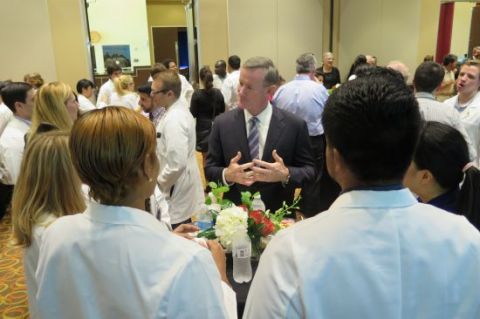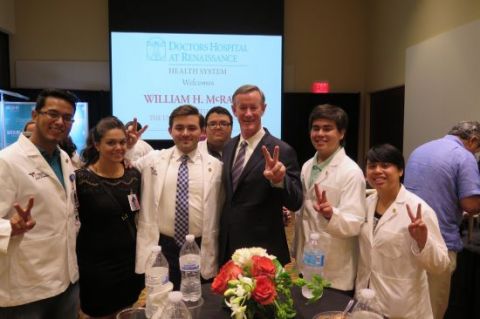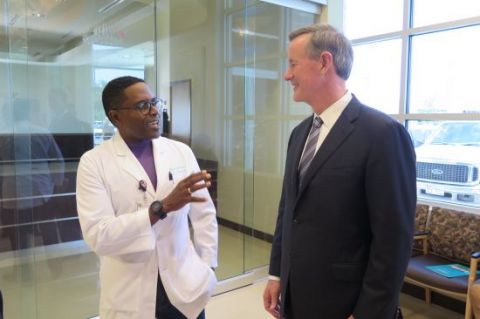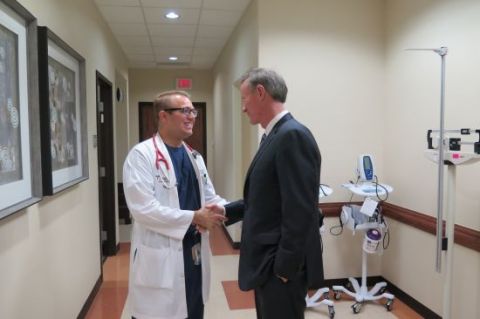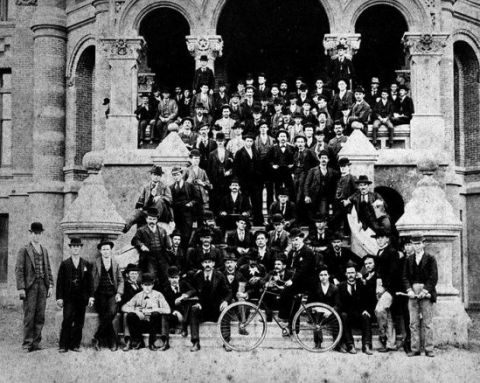Page title
Making History in the Valley
Main page content
Last Thursday, I had the opportunity to see history unfolding in the Rio Grande Valley. I traveled from Austin for a series of events related to the new UTRGV School of Medicine and the positive impact it is having on the health care ecosystem of the Valley.
The highlight of my day was getting to visit with the UTRGV residents and students – an impressive group, to say the least. If you have ever wondered what it feels like to have an entire region pulling for you and rooting you on in your studies, just ask one of the 55 members of the School of Medicine’s inaugural class.
The Rio Grande Valley has been waiting for a new medical school, literally for decades. And our new first-year students have embraced the fact that their medical education is not just about them – it’s about starting a process that will ultimately transform a region. Does that sound hyperbolic to you? If so, consider what it means that – for the first time in history – a child born in Mission, San Benito, Brownsville, McAllen, or any other city or town in the Valley will be able to go from pre-K all the way through medical school, residency training and medical practice without ever leaving the community they and their families call home. Think of the generations of future doctors who, rather than leave, will stay and care for their neighbors and friends.
While a medical school is an extremely important – and extremely valuable – element of any community’s health care ecosystem, it takes the community working in concert to realize the kind of transformation we hope to achieve in the Valley. I can’t tell you how impressed I am by the civic and business leaders of the region and how gratified I am by their support. This includes the leaders of Doctors Hospital at Renaissance, who gave me a tour of a magnificent facility where UTRGV students and residents are already learning and treating patients.
To see what’s possible when a community comes together to create a world-class health care ecosystem, look at San Antonio, my hometown. When I was growing up, it was – by and large – a military town. Today the military presence is still there, but because the community – with UT Health Science Center San Antonio leading the way – rallied together, it now has a booming health care industry valued in the tens of billions of dollars. While it won’t happen overnight, I think that same kind of transformation is not only possible, but likely in the Rio Grande Valley.
I told a few of the first-year students I chatted with about a photograph I saw recently at UT Medical Branch in Galveston. It was a picture of UTMB’s inaugural class, taken more than 100 years ago. I told the students 100 years from now – when The UT Rio Grande Valley School of Medicine is celebrating its centennial – the grandchildren and great grandchildren of today’s Valley residents will be looking at them, thinking “that is the class that started it all.”
The UT System is in the Valley for the long haul. But even though these medical students have just started, we are not waiting 100 days – let alone 100 years – to positively impact the health of the region. To cite just one example, this past weekend, health professionals from our Project Diabetes and Obesity Control (DOC) collaborated with Wal-Mart to provide free health screenings at its retail stores in South Texas. The costs diabetes and obesity impose on our society are unacceptable – and nowhere is the problem worse than in the Valley. The good news is we have a very talented, very determined and innovative team working on Project DOC, as well as at UTRGV’s South Texas Diabetes & Obesity Institute, that is tackling the problem head on.
As I have said many times, the opportunity to participate in the transformation of the Rio Grande Valley was one of the biggest – in fact, probably the biggest – reason I wanted to come work for the UT System. If I ever doubt the wisdom of my decision (and I never will), all I need to do is take another trip to the Valley and check in on our progress.
I can’t wait to go back.
Thanks as always for reading. I’ll write again soon.

